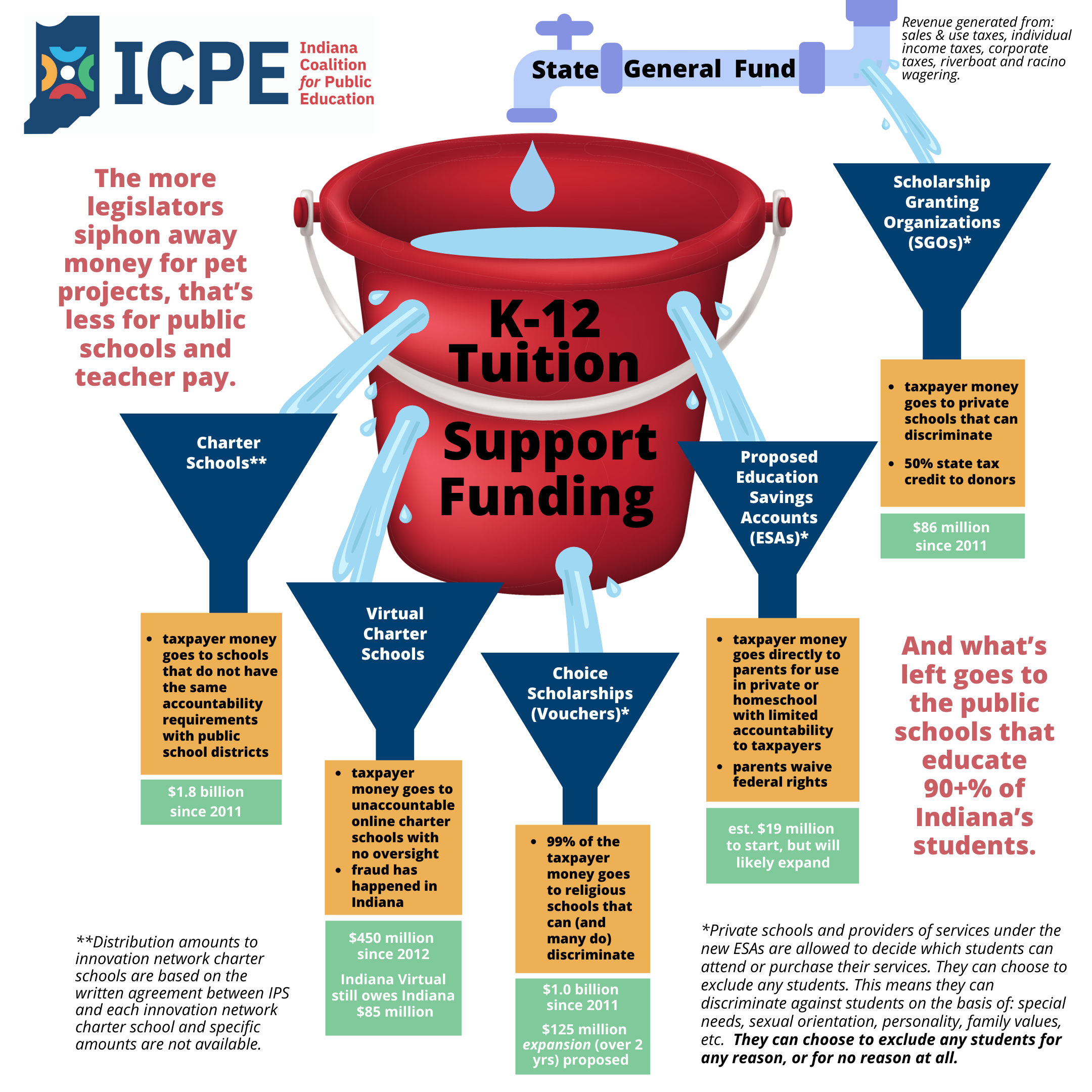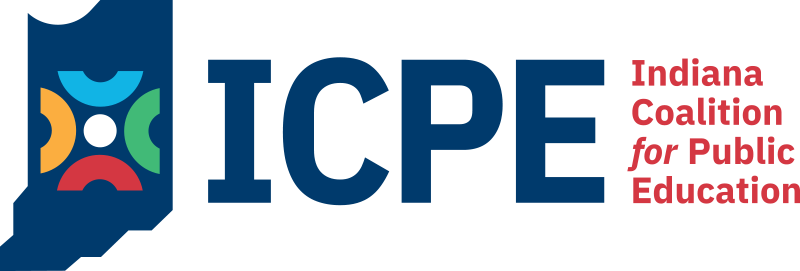Op Ed: The Leaky Bucket of Indiana K-12 School Funding

Marilyn Shank, Vice President of ICPE, wrote a letter to the editor which appeared in the print version of the Indianapolis Star on April 25, 2021.
Every odd-numbered year when the Indiana General Assembly develops the state’s next budget, legislators often brag about funding increases for K-12 education. At the same time, your local public school district may see a small increase that barely keeps up with inflation or even a decline. How is that possible?
The difference between what the General Assembly budgets and what public school districts receive occurs because the state now funds more than one education system. The first education system, the one required by Indiana’s Constitution, is made up of Indiana’s traditional public schools that educate more than 90 percent of Indiana’s children. In recent years, the General Assembly has passed legislation to create public charter schools (the second system), and the state’s voucher program (the third system) that allocates tax money for students to attend private schools. Ninety-nine percent of the voucher-accepting schools are religious schools.
In the current legislative session, Indiana is considering authorizing a fourth type of school system through private school Education Scholarship Accounts (ESAs), which are another form of voucher.
Before 2011 the entire “bucket” of K-12 education funding dollars would have gone to public schools. This “leaky bucket” graphic shows how that money is being diverted in multiple directions. Although the K-12 education budget will increase for 2022-2023, public schools will get just part of it.
If the voucher expansion and ESA initiation in the proposed budget pass, Indiana’s public schools will lose more than $233 million in 2022 due to various forms of vouchers, ranging from a $47,829 loss for Medora Community School Corporation to $9.8 million for Indianapolis Public Schools, a district that is already trying to make up for an $18 million budget shortfall. You can see the financial impact on your school district on this interactive map.
Losses to public school funding will grow in future years just as voucher expenses have grown since 2011. Vouchers, which cost $15 million the first year, now cost $172 million a year – reaching a cumulative total of $1 billion of taxpayers’ money as voucher eligibility has expanded. Based on the experiences of ESA programs in other states, we can expect the General Assembly to expand the categories of students who will qualify for an ESA in future years.
As a result of the “leaks” in the bucket of school funding, Indiana has dropped in per-pupil school funding from being number 20 in the U.S. in 2005 to number 39 in 2018. Indiana ranked last in salary growth for teachers between 2002 and 2017.
More than 180 Indiana public school districts have adopted resolutions opposing additional dollars going to private schools. When that many public school districts object, it is clear the General Assembly’s expansion of privatization options is universally hurting public schools across Indiana.
